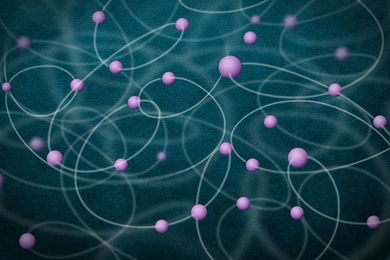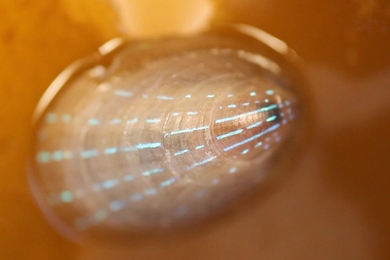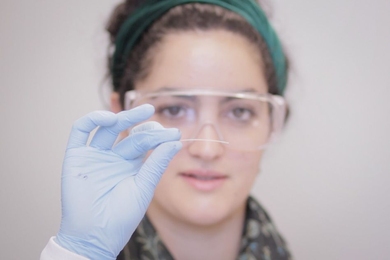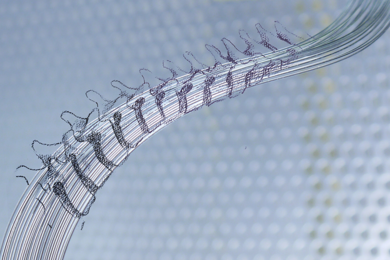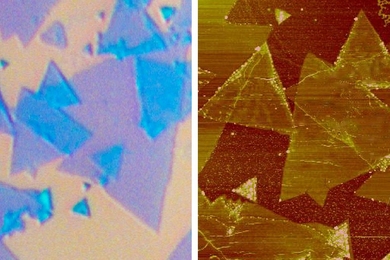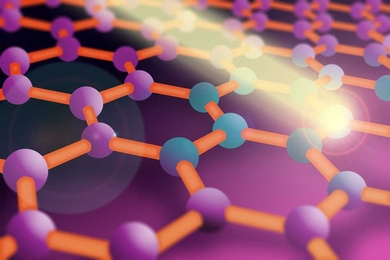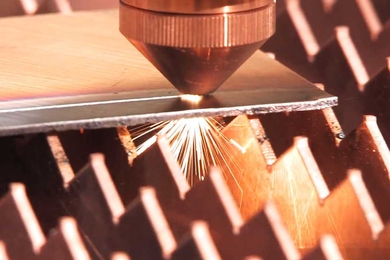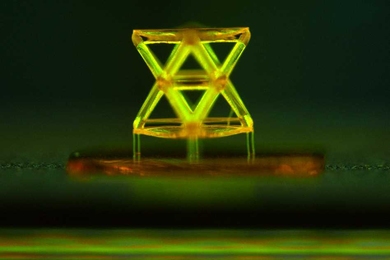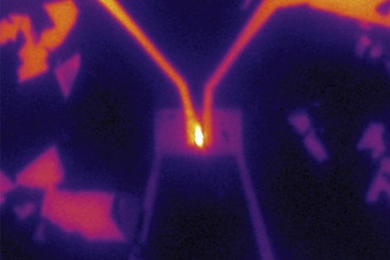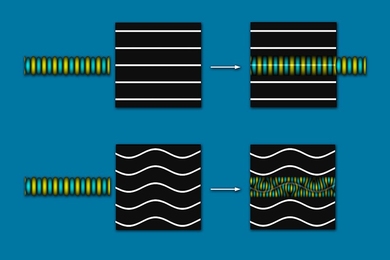Materials Processing Center marks 35 years
Service to faculty, collaboration with industry are hallmarks of campus-based Materials Processing Center at MIT.
A mollusk of a different stripe
Optical features embedded in marine shells may help develop responsive, transparent displays.
New fibers can deliver many simultaneous stimuli
Implanted into the brain or spinal column, they can transmit drugs, light, and electrical signals.
Striking the cord: Optical control of motor functions
Grad student Chi Lu and colleagues demonstrate a highly flexible polymer probe for triggering spinal-cord neurons with light and simultaneously recording their activity.
Toward optical chips
A promising light source for optoelectronic chips can be tuned to different frequencies.
Light pulses control graphene’s electrical behavior
Finding could allow ultrafast switching of conduction, and possibly lead to new broadband light sensors.
Faculty highlight: Marin Soljacic
Physicist reveals new techniques for controlling light by angle, creating transparent displays and photonic crystal bandgaps.
Making the cut
Lincoln Laboratory spinout is commercializing the first direct-diode laser bright enough to cut and weld metal.
New ultrastiff, ultralight material developed
Nanostructured material based on repeating microscopic units has record-breaking stiffness at low density.
NIST awards $539,990 grant to photonics consortium
MIT Microphotonics Center joins iNEMI for 19-month project to develop technology road map.
A new angle on controlling light
System could provide first method for filtering light waves based on direction.
Two-dimensional material shows promise for optoelectronics
Team creates LEDs, photovoltaic cells, and light detectors using novel one-molecule-thick material.
A new wrinkle in the control of waves
Flexible materials could provide ways to manipulate sound and light.
